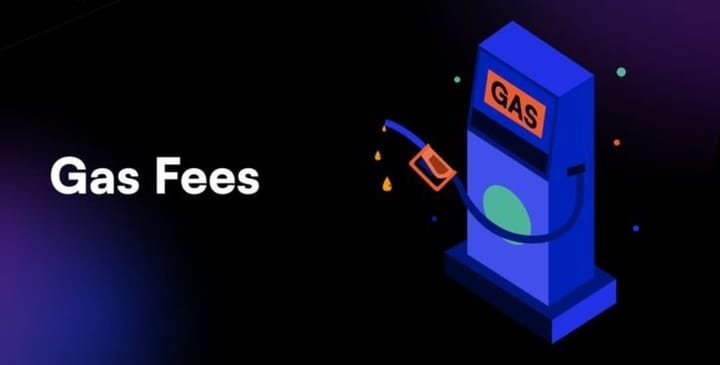The Cross-Chain Toolkit You Didn’t Know You Needed

Introduction: The Problem with Fragmented Chains
If you've ever used crypto, you’ve probably noticed something: every blockchain feels like its own island. Ethereum, Solana, Avalanche, and others each have their own apps, tokens, and rules. It’s like needing different chargers for every phone in your house. Frustrating, right?
Now imagine trying to move money between these “blockchain islands.” You’d have to use third-party bridges, wrap your tokens, or deal with complex swap tools just to use your own funds on a different chain. And with each step, you’re taking risks, paying fees, and losing time.
But what if there was a toolkit that made all of this simple?
What if you could move across chains like switching tabs in your browser?
Let us introduce you to the cross-chain toolkit you didn’t know you needed.
What Is a Cross-Chain Toolkit?
A cross-chain toolkit is a set of tools and features that let you move, manage, and use your crypto across different blockchains without friction.
Think of it like a Swiss Army knife for DeFi. Instead of using 5 different platforms to bridge, swap, and track your assets, you use one.
It helps with:
- Sending tokens from one chain to another
- Accessing apps from multiple chains in one place
- Automating your DeFi strategies across chains
- Getting better yields and lower fees through smart routing
All without needing to be a tech expert.
Real-Life Analogy: Pizza Delivery in Different Cities
Imagine you’re in Lagos and you love Domino’s Pizza. You fly to Accra, and suddenly the Domino’s app doesn't work. So now you need to download a different pizza app, create a new account, figure out the prices in a different currency, and hope they even deliver to your area.
That’s how DeFi feels without a cross-chain toolkit.
But with the toolkit, it’s like using one pizza app that works in every city, automatically showing local menus, converting prices, and using your same login. That’s the power of going cross-chain without stress.
Why It Matters in Crypto Today
DeFi is growing fast. Every new chain brings:
- Cheaper gas fees
- Faster transactions
- New apps and features
But users are stuck. Their funds are on one chain, while better yields or apps are on another.
This means:
- Missed opportunities
- High gas fees for bridging
- Confusing tools that scare off beginners
The cross-chain toolkit solves this.
It gives you:
- Freedom: Move your assets wherever they work best
- Speed: No waiting hours to bridge
- Safety: Avoid shady or insecure bridges
- Simplicity: No more juggling 5 wallets or dApps
What’s Inside the Toolkit?
Let’s break it down into simple parts:
1. Cross-Chain Swap Tool
This lets you swap tokens between different blockchains in one step.
Example: Swap ETH on Ethereum for USDC on Arbitrum without touching a bridge.
2. Cross-Chain Vaults or Strategies
Earn yield or stake tokens in strategies that automatically use the best chain for the job.
Example: You deposit USDT, and the system might move it to Optimism or Base to farm higher yield, all behind the scenes.
3. Bridge Aggregator
Instead of picking one bridge manually, this tool finds the best route among many bridges and handles the process for you.
Example: Want to move funds from BNB Chain to Polygon? The toolkit picks the fastest, cheapest, and safest way automatically.
4. Unified Wallet View
See all your assets across multiple chains in one dashboard.
Example: No more switching wallets to check what you hold on Avalanche, Solana, and Ethereum. One page shows it all.
5. Programmable Actions
You can set up triggers like:
- “If yield drops below 3%, move to another chain”
- “Swap rewards weekly and restake on a better chain”
It’s like having a smart assistant running your DeFi setup.
Who Needs This Toolkit? (Hint: Almost Everyone)
Let’s look at some user types and how this toolkit helps:
The New Crypto User
They’ve just started and are lost between MetaMask, bridges, gas tokens, and swap fees.
The toolkit helps by giving them one simple UI where everything works cross-chain swaps, yield, and tracking.
The Yield Farmer
They chase the best APY but hate the hassle of constantly bridging and swapping.
The toolkit helps by automating that entire process.
Crypto Educators
They teach others, but complexity makes onboarding hard.
The toolkit helps them give students a clean, user-friendly experience that works across chains.
DeFi Power Users
They want control and efficiency.
The toolkit helps by giving them programmable strategies, gas optimization, and full asset visibility.
Why You Didn’t Know You Needed It
Because you’ve been trained to deal with the pain.
In the crypto world, we often accept:
- Manual bridging
- High fees
- Risky dApps
- Confusing wallet setups
We think that’s just “how DeFi works.” But it doesn’t have to be.
You didn’t know you needed this toolkit because nobody told you DeFi could be simple, smart, and seamless.
Example Use Case: From Confused to Confident
Without the Toolkit:
Jane wants to:
- Move USDT from Ethereum to Base
- Swap for ETH
- Stake in a yield vault
She ends up:
- Using two bridges
- Paying three gas fees
- Waiting 15 minutes
- Getting stuck with no ETH for gas on Base
- Losing $30+ in the process
With the Toolkit:
Jane logs in, selects:
- “Send USDT from Ethereum to Base”
- “Swap to ETH and stake in yield vault”
Clicks once. The toolkit handles it.
She pays one fee, waits a few seconds, and sees her staked position live.
No stress. No errors. No regrets.
The Hidden Benefits
Besides ease-of-use, here’s what else you get:
- Gas Savings: Smart routing reduces unnecessary gas fees
- Fewer Mistakes: No wrong networks or failed transactions
- Security: Uses trusted bridges and protocols
- Time Back: One click vs. 10 steps
- Better Yield: Access to cross-chain vaults with smarter strategies
What About Risks?
Every tool has trade-offs. Even the best toolkit isn’t magic.
Here are a few things to watch for:
- Make sure it uses audited bridges and protocols
- Understand what you’re approving (especially with smart contracts)
- Check for slippage and fees, even if automated
Good toolkits will show all of this clearly.
Toolkits in the Real World: Mitosis as an Example
One example of this kind of toolkit is Mitosis.
Mitosis is building a modular cross-chain layer that:
- Connects multiple chains into one programmable engine
- Offers smart routing and yield optimization
- Powers apps and tools to interact across chains natively
It’s like the backend brain of your cross-chain toolkit.
Apps built on Mitosis can:
- Automate yield vaults across chains
- Power dApps with seamless bridging
- Help you move your tokens like water flowing wherever needed
If Mitosis is the engine, your toolkit is the car. You just drive.
The Future of Cross-Chain Is Invisible
The best tech fades into the background.
You don’t think about TCP/IP when browsing the web.
You don’t care what server Netflix uses, you just want to watch.
Cross-chain crypto should feel the same.
The right toolkit:
- Hides the complexity
- Automates the boring stuff
- Lets you focus on what you actually want to do
Whether that’s earning yield, moving funds, or using dApps you do it, and the toolkit handles the rest.
Conclusion: Stop Struggling, Start Flowing
Crypto was meant to give us freedom and control, not stress and confusion.
If you’ve ever:
- Missed an opportunity because your funds were on the wrong chain
- Paid too much in fees bridging assets
- Abandoned a task because it was too complicated
Then you definitely need the cross-chain toolkit.
It doesn’t just save time, it unlocks the full potential of DeFi by making it accessible, efficient, and fun.
Summary
- Cross-chain toolkits help users move, swap, and manage crypto across different blockchains easily.
- They combine swap tools, bridge aggregators, dashboards, and automation into one user-friendly experience.
- Real-world benefits: less friction, better yield, lower risk, and more freedom.
- Toolkits like Mitosis are powering this invisible infrastructure.
- If you want to stop struggling and start flowing through DeFi, this is the toolkit you didn’t know you needed until now.



Comments ()